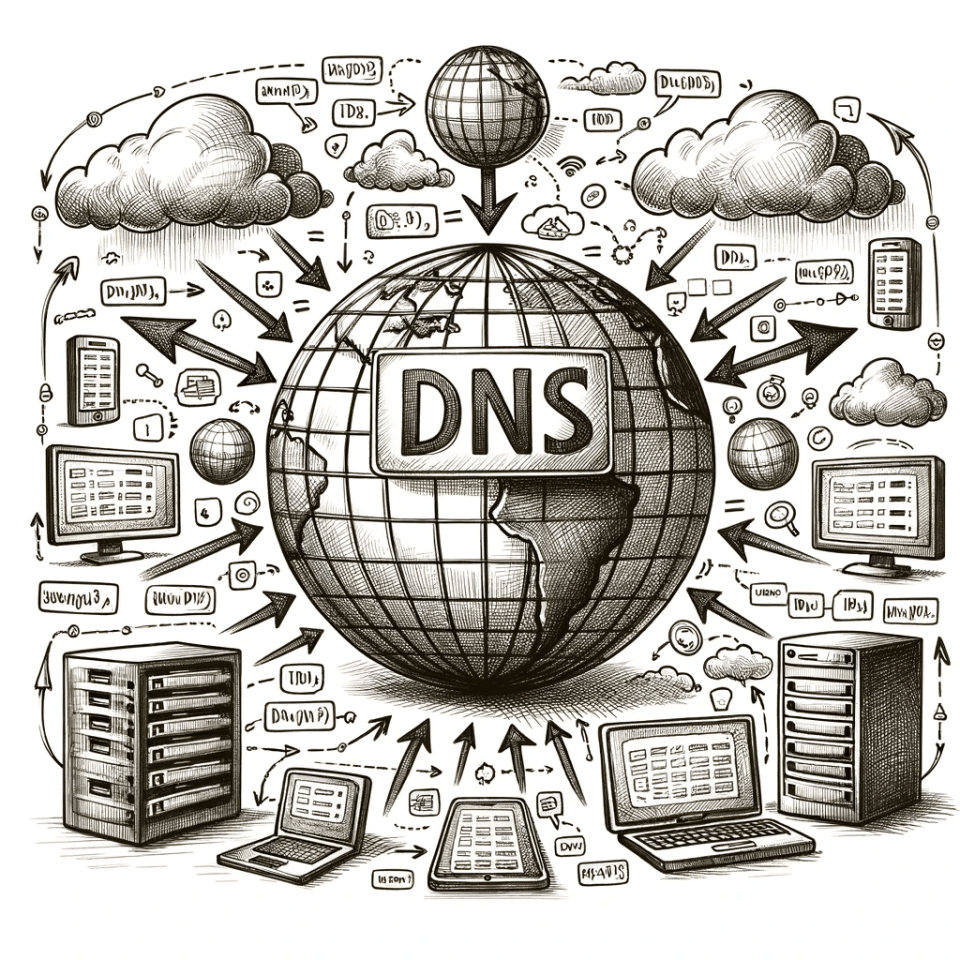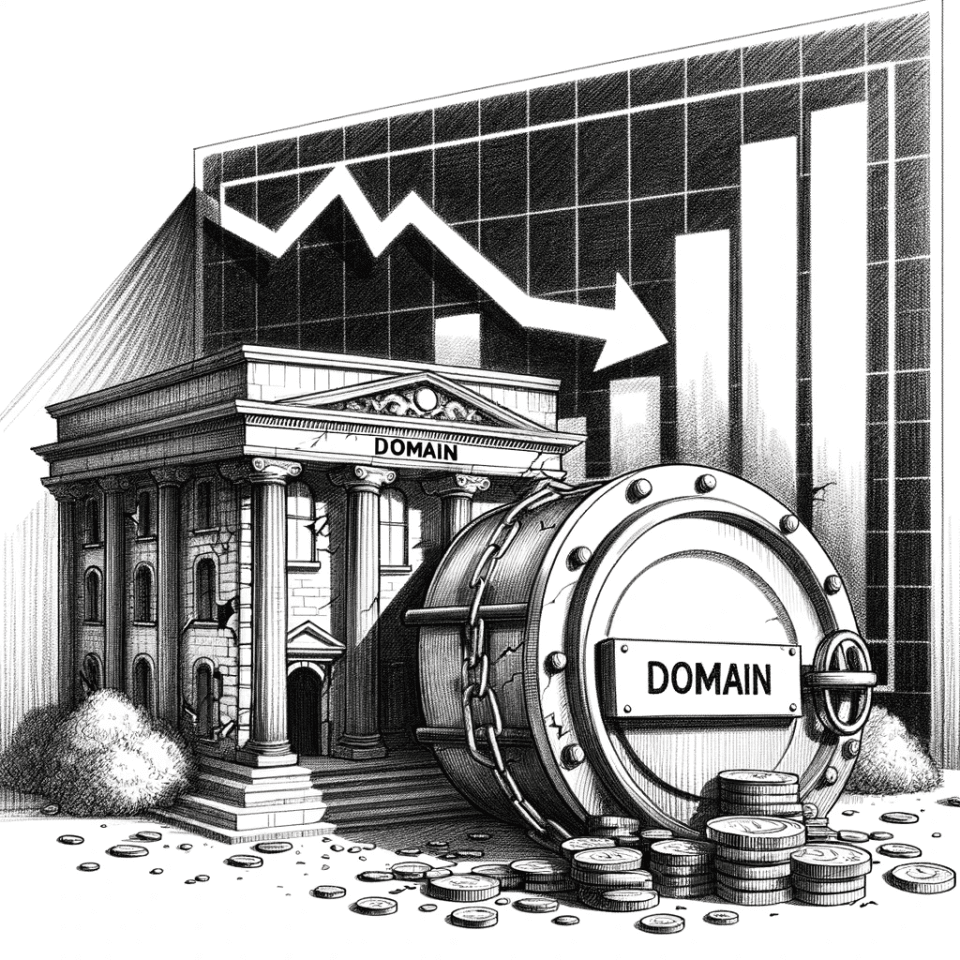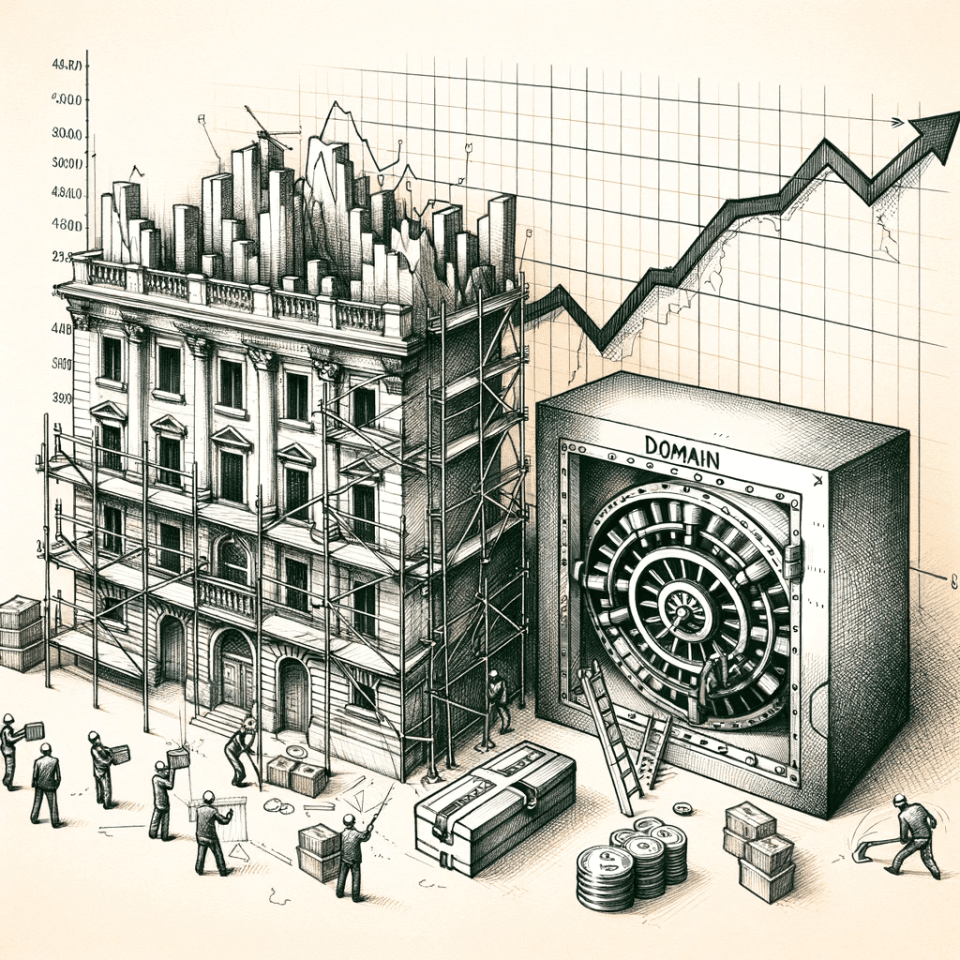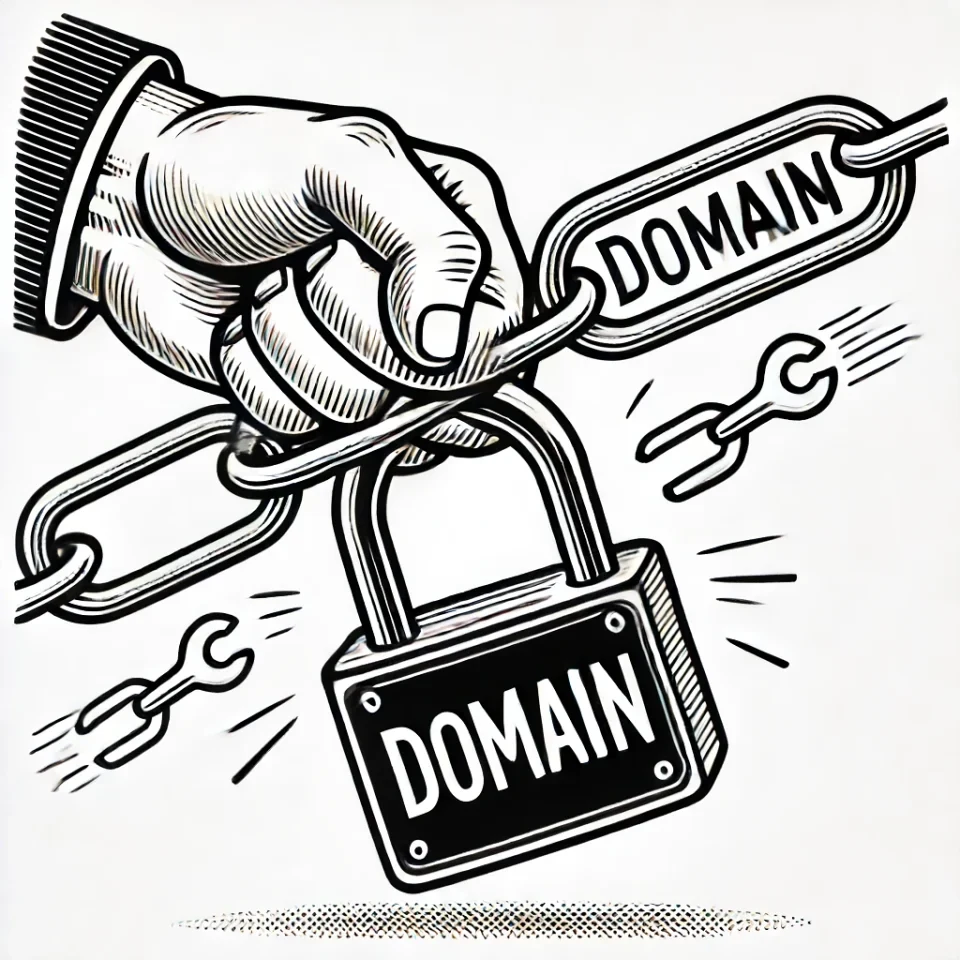As customers, we often find and recall brands online by their domain name. If a hacker steals or hijacks your domain name and conducts fraudulent activities, customers might perceive it to be you – severely damaging customer trust.
That’s not all; by 2025, cyber attacks will cost businesses a hefty amount of $10.5 trillion per year. That’s another reason why you must be aware of one of the most vicious cyber-attacks – domain hijacking.
To help you prevent domain hijacking, we have curated this extensive guide on domain hijacking with examples, cases, legal status, impact of domain hijacking attacks, and best practices for prevention.
What is Domain Hijacking?

Domain hijacking is the act of modifying the domain registration or Domain Name System (DNS) information without consent. After that, the hacker may restrict the domain owner’s access to it or display unauthorized content.
For instance, domain hijacking may cause businesses financial losses if they rely on their website to make sales (e-commerce) or severe reputational damage if the hacker posts malicious content or leads to an installation of malware.
Domain Hijacking Examples and Popular Cases
Let’s quickly go through some examples and cases to deepen your understanding of domain hijacking attacks:
Examples of Domain Hijacking
- Social engineering (phishing) is when domain hijackers impersonate the domain registrar and ask the domain owner for confidential information over a call or a fake login page.
- Domain Hijackers impersonate the domain owner with the registrar to strategically acquire control over the domain.
- Installing malware on the target’s computer to get the credentials to seize control of domains.
- Unauthorized modifications to the DNS to disrupt communication channels, send fake emails and malicious messages. This puts your business and customer data at risk as they gain access to sensitive information available in emails.
- Domain name pharming and transfer occurs when a hacker re-routes your website’s traffic to a fraudulent website, leading to financial and reputational damage.
- Domain takeover results from losing control of your highly valuable domain to the attacker, who may use it to sell or ask for ransom.
Popular cases of Domain Hijacking
- In 2015, Google’s Vietnam search page was hijacked for a short span.
- Microsoft’s domains–passport.com and hotmail.co.uk were hijacked in 1999 due to negligence in their timely renewal.
- When Lenovo.com was hijacked, users were being re-diverted to another website upon access attempts.
How Does the Domain Name System (DNS) Work?

The DNS protocol though quite simple literally powers the internet. The Internet Corporation for Assigned Names and Numbers (ICANN) appoints a separate domain name registry to manage each top-level domain (TLD).
- Large organizations like the Public Interest Registry (.org) and Verisign (.com and .net) manage the most recognized TLDs.
- Organizations in different countries cater to national domains like .io or .ai.
ICANN has accrediated organizations to act as Registrars. The registrars act as the interface between consumers and registries. The domain owner registers a domain with a registrar and is then required to provide a Fully Qualified Domain Name (FQDN) for a Nameserver.
Humans are terrible at remembering numbers and computers communicate using a set of addresses expressed as integers. Nameservers are the resolvers that translate a human readable URL to a machine readable address called the IP address.
This resolution widens the surface area for an attack. You might technically own a domain name but if a hacker seizes control over your nameservers, they can display malicious content at will without the consumers or domain owners being aware.
Is Domain Hijacking Illegal?
Domain hijacking attack is equated as theft, but has no defined legal status. As the term ‘theft’ is often associated with physical goods, seizing control of a domain name from the original owners is in essence the same thing.
Barely any international or national law specifically criminalizes domain name hijacking, which can be due to the difficulty of prosecution if the hijacker transfers the domain to an international registrar.
Still, you may find some jurisdictions or US courts that accept domain theft cases and work towards the recovery of stolen domain names. Also, some countries consider some of the acts of domain hijacking as a criminal offense.
Although ICANN has introduced policies like Uniform Domain-Name Dispute-Resolution Policy (UDRP) for trademark dispute resolution, a policy on domain takeover is missing, leaving consumers at the mercy of long winded legal process.
Impact of Domain Hijacking

Domain name hijacking involves multifaceted threats to a company’s reputation and customer relationships. Let’s understand them in depth:
1. Financial losses
Domain hijacking can cause severe financial losses. This is especially true for SaaS or eCommerce businesses that rely heavily on their website to make sales. Losing control over your domain and website, in such cases, could bankrupt a business.
2. Destroys brand reputation
Domain hijacking extends to using the hijacked domain name to perform fraudulent activities impacting your customers. Malware or social engineering attacks leads to complete loss of customer trust and can also impact your rankings on Search Engines.
3. Risks data confidentiality
Phishing attacks conducted using hijacked domains can lead to acquisition of customers’ personal information and sensitive data.
Such data includes contact information, IP addresses, account information, credit cards, and social media handles. Hackers can use this data to steal identity, wrongly access customers' accounts or sell the data on the darkweb.
4. Loss of control over your brand
When a hacker hijacks your domain name, you will likely lose control over your website. After taking over your website, the hacker may make unauthorized or malicious changes to your website content. This can damage your brand’s online reputation and loss of customer trust.
5. Legal consequences
Recovering intellectual property like domain names is an extensive and costly legal process. The legal process can take months if not years for resolution from Courts, further, the enforcement of the legal orders itself can be challenging depending on the jurisdiction of courts.
The loss of confidential data, can also make your business liable for financial losses and damages suffered by your customers. European laws also enforce severe damages on businesses that do not have adequate systems in place to prevent such attacks.
6. Wastes marketing campaign efforts
Companies invest significant amounts in their online marketing campaigns to build and strengthen their online brand presence. Domain name hijacking can redirect traffic from paid campaigns to a malicious website created by the hacker.
How Can You Recover a Hijacked Domain?

77% of companies have no response plan for a cybersecurity incident, but your business cannot be one of them. Having a solid plan in place can protect your business from such attacks and can help you recover quickly.
After hijacking your domain, the hacker may either use it as it is to conduct malpractices or further transfer it to another registrar (under the same or different jurisdiction). In either case, quick recovery of your hijacked domain is critical to your business’s image.
Here are the four recommended approaches to recover a hijacked domain:
1. Collaborate with a leading security organization to investigate the domain hijacking incident, analyze it, and recommend the best solutions.
2. Reach out to your domain registrar, as they are experienced in resolving such issues with minimum risks or losses. If the registrar detects a fraudulent domain transfer, they’ll take action to return control.
3. Request your registrar to implement the Registrar Transfer Dispute Resolution Policy by Internet Corporation for Assigned Names and Numbers (ICANN) to get control over your domain back. You need this when your hijacker transfers your domain to another registrar.
4. Get expert guidance and help with your domain recovery by contacting ICANN’s Domain Name System (DNS) Abuse Desk.
These were the major ways of recovering your stolen domain name. However, you must remember that these methods are painfully exhausting and have a long resolution time. That’s why preventing domain hijacking is better than recovery.
How to Prevent Domain Hijacking?
Better be safe than sorry. Your business doesn’t have to suffer the negative consequences that can significantly impact the bottom line. Here are the recommended approaches to prevent domain hijacking:
1. Implement extra layers of security
To prevent your domain from getting hijacked, you must set unique and unguessable passwords for all your accounts, including symbols, lowercase, and numbers. Don’t forget to change them regularly and enable two-factor authentication.
So, if your password is leaked, you have a shield or a second layer of the code sent via text or email to log in as the second factor.
2. Disable Domain Transfer
Most registrars provide an option for disabling a domain transfer, also called a "Registrar Lock".
This setting should be enabled for all domains. Domain transfers are a rare event and you can enable the transfers at will when needed.
3. Enable Registry Lock
Corporate domain registrars provide an additional layer of security where the domain transfers are locked at the Registry level, also called a "Registry Lock".
Disabling this usually requires a call from the Registry to the authorized person for approval and is the highest level of security that you can enable to prevent domain hijacking.
4. Select a trusted domain registrar for domain name registration
Internet Corporation for Assigned Names and Numbers (ICANN) accredits registrars that you can rely on. With such registrars, you can expect stringent domain protection with facilities like DNS management, 24*7 technical support, and two-factor authentication.
You can also chose to transfer and register your domains with Corporate Domain Registrars. Corporate Registrars are built for businesses and offer advanced features like change control, budgets, payment plans, white glove support.
5. Utilize all the security facilities available
Protecting your domain is possible if you utilize most of the security options available. You must be proactive, as the reason for 95 percent of cybersecurity breaches is human error.
Some of the security features to note are:
- Look for the domain locking feature, as it strictly prohibits domain name transfers.
- Utilize the account lock service that many registrars provide. This limits the number of wrong password attempts, locks the account when the number exceeds, and alerts the domain owner via email about the suspicious activity.
- Set auto-renewal for your domain name because if it expires, someone else can take up your domain name. This can lead to loss of control over your domain, which is quite common.
- Keep your web and domain hosting separate so that the hacker can never get complete access to all your online assets.
- Regularly update your domain’s contact information because if your registered email is not in use, the hijacker might use it to recover passwords and seize control of the domain.
6. Enable WHOIS security
WHOIS (who is responsible for a domain name or an IP address?) is a publicly available record regarding registered domain names. WHOIS information includes sensitive data like your address, number, and email address that cybercriminals may use to conduct domain hijacking.
To avoid this and better protect your critical details, you can purchase or enable WHOIS protection option offered by most domain registrars.
Wrapping Up: How Nametrust Can Help?

If your domain name is hijacked, you may face financial losses and damage to customer trust. To avoid this, you must protect your domain from getting hijacked by following the approaches outlined above.
However, the domain name protection journey involves a high investment of effort and money. Done wrong, it can damage your brand reputation. So, leverage the expertise of a secure corporate domain registrar like Nametrust to protect your domain name.
You can trust us to manage your domain portfolio, take action to reduce cybersquatting, and weave strategies to prevent brand abuse. Nametrust’s comprehensive feature stack includes Security Assertion Markup Language (SAML), multi-user support, a dedicated account manager, and Single sign-on (SSO) that you can rely on for domain portfolio management.
Take the first step towards domain name protection by getting started with Nametrust today.




